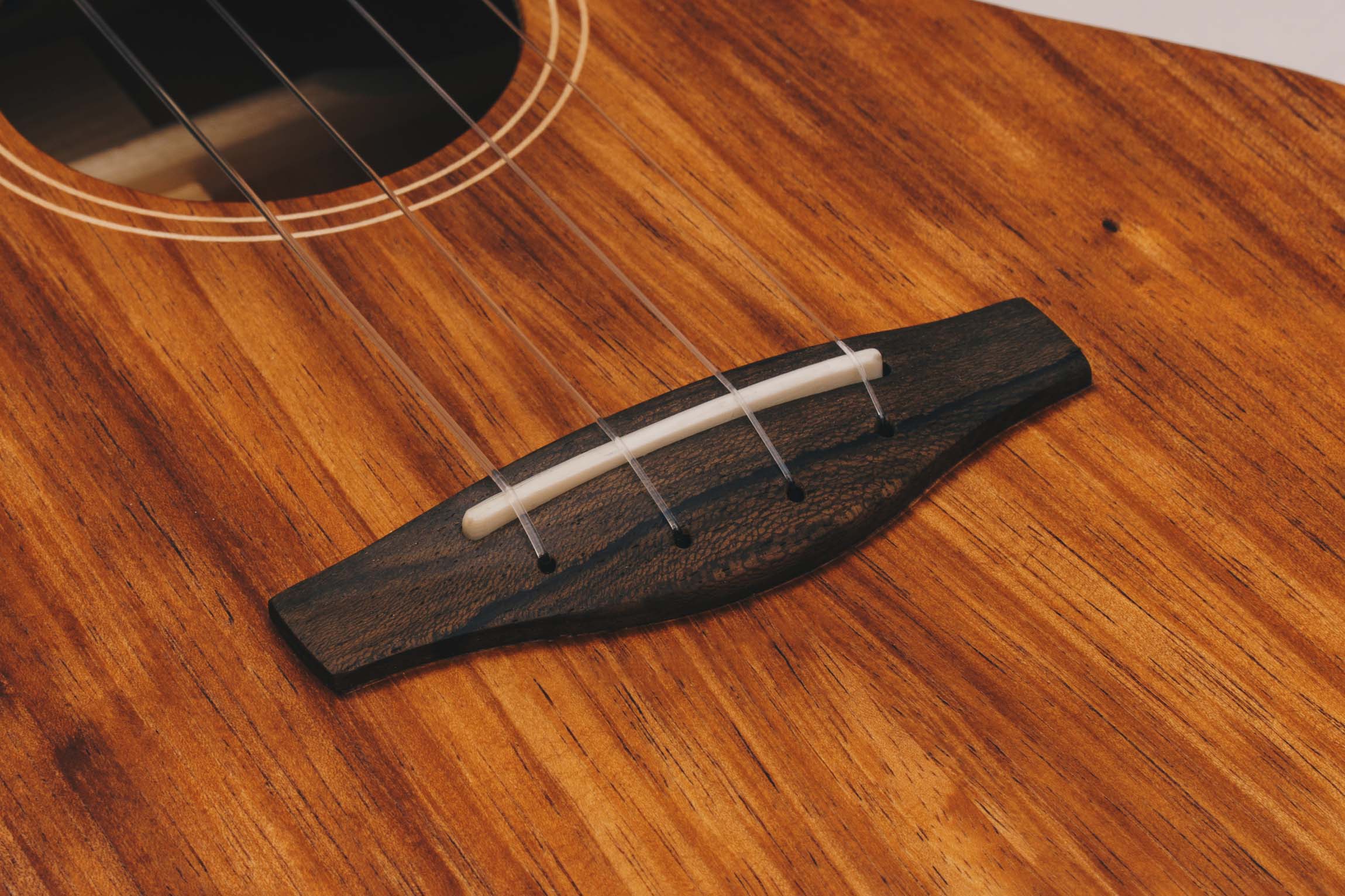Designing the perfect ukulele bridge

When we think of ukuleles, our minds often wander to their cheerful tunes and the beautiful simplicity of their design. But as with many great things, the simplicity we see is often the result of intricate thought processes and meticulous design choices. One such innovation that I embarked upon was the concept of an modern, organic bridge for these beloved instruments.
The vision of an organic instrument
I was captivated by the notion of creating a far more organic bridge than I'd seen before—a bridge that wasn't just a two-dimensional shape, but one that had depth and form. A singular, three-dimensional shape that emerges not from a series of straight lines and curves, but carved away from a singular, solid piece of wood. The beauty of such a design is in its simplicity.
In paying homage to classic designs like the Weissenborn's bridge, I envisioned the string holes following a gentle curve. It's these small nods to time-honored traditions that lend a sense of authenticity to modern designs.
Redefining dynamic range
But innovation wasn’t just about aesthetics. The essence of an instrument is its sound, and this bridge was to play a pivotal role in that. A defining feature of our ukuleles is the seamless system that ties the strings to the structure.
Unlike traditional ukuleles where strings are tied off on the bridge, these ukuleles have their strings anchored directly to the soundboard. It's a more complicated design, more effort to change strings but it offers unsurpassed tonal qualities and enhances the dynamic range, offering a richer and more resonant sound as every string vibration is transferred seamlessly into the ukulele's bracing to be amplified and projected out towards the player and audience.
The bracing structure and bridge were designed in tandem to be a singular acoustic machine.
From idea to reality
Once I put pen to paper, the idea evolved with surprising swiftness. One curve inspired another and another and another. That's not to say it was without its challenges. Achieving the perfect ukulele bridge meant laboring over many prototypes, adjusting minute details, adding or subtracting mere fractions of millimeters.
It was a dance between aesthetics and functionality, aiming to strike the right balance between visual appeal and the precise weight and measurements required to draw out the best possible tonal range.
A timeless harmony
The end product is a testament to the harmony between the old and the new. It's an organic design that effortlessly blends minimalism with modernity. Its lines are clean, its form is elegant, and its functionality is unmatched.
But above all, it serves as a reminder that innovation isn't just about creating something new; it's about reimagining the old in novel ways, leading to designs that are both timeless and contemporary.
In the end, crafting the perfect ukulele is not just about the music it produces, but also the story it tells—a story of passion, innovation, and a relentless pursuit of perfection.
